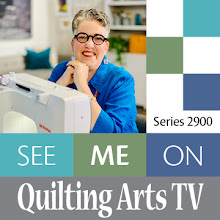 |
| Trouble cat says, “Take me with you!” |
If you’ve been checking in on my blog every few days, you may have noticed that it’s been mighty quiet around here lately. That’s mostly because I’ve been on the road a lot this month. In the past two weeks, I’ve taught four days and given two lectures, and traveled to nearby Concord, NC, to the Cabarrus Quilters Guild and to the Lake Quilters Guild of Smith Mountain Lake, near Roanoke, VA.
I love speaking and teaching, but I also need time in my studio to work and think and create. Today I got a little. I am starting to work on a commission piece, and this time, I am experimenting with tweaking my preparation process.
When basing a piece on one of my photos, I often start by tracing an 8x10" printout. I add things, take things out, or move things around while I trace. Then I scan in this traced drawing, enlarge it and print it out in “tiles” (or sections), and use this printout as my pattern. If the piece will be done using fused applique, it becomes the pattern for the fabric pieces. If the piece will be wholecloth painted, I place it under fabric and trace the lines.
This time, instead of using an 8x10" photo, I had my photo enlarged to a 2 x36" poster through PosterBrain. It cost me $19 plus shipping, arrived very quickly, and the quality was fantastic, just like a giant photographic print. Here it is, spread out on my cutting table:
A student at one of my workshops suggested a type of tracing paper I’d never heard of before called Bumwad. Sounds like toilet paper, right? ;-) It is actually a type of tracing paper used by architects, and it comes in big, wide rolls, up to 24" and 36" wide. Bumwad is available through ArtSuppliesOnline. I paid $16.23 (plus shipping) for a 24" x 50 yard roll.
I placed a piece of Bumwad (fighting the giggles now, each time I write that) on top of the photo and taped it down.
Then I started tracing the main lines in the photo. (You can see the photo I printed out on my laser printer next to the pen.) My first impression is that the Bumwad is a tad heavier than traditional tracing paper, which has its pros and cons for my process. It does not tear as easily (pro), but it is also harder to see through (con). I could put it on top of a light box, but because the poster is on paper that is nice and heavy, I doubt that the light box would help me see any better. I do find that I am able to see better when I flip on the lower setting of my overhead desk light, rather than the brightest setting.
I am reserving judgment on whether I like these materials or the changes to my process, but I’ll let you know as I work more on this project. I am thinking about using some melted Tyvek pieces on the bumpiest of the pumpkins in this piece.















